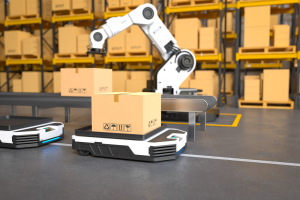Why Is Lithium-ion Battery So Expensive?
A number of variables that affect the cost of production of lithium-ion batteries contribute to their high price. First off, the ingredients used to make lithium-ion batteries, which include metals like nickel, cobalt, and lithium, can be costly and volatile in price depending on supply and demand. The cost is increased by the manufacturing process itself, which calls for a regulated atmosphere and advanced technology. Strict safety and quality regulations also drive up costs since manufacturers must spend money on testing and research to make sure the batteries are safe.
Why Do Lithium Batteries Cost So Much?
A Lithium Load
Lithium prices have soared practically without interruption in the last few years alone.

The growing usage of lithium batteries in electric vehicles, large-scale energy storage projects, and consumer gadgets is largely responsible for this expansion.
Now that the Model 3 has finally been released, Tesla plans to quickly increase production at its Gigafactory. Almost all of the present lithium production in the world is predicted to be consumed by this factory alone, the first of several that are scheduled to be built worldwide.
The rising demand for lithium will take some time for supply to meet, thus its ascent is not expected to slow down very soon.
Less than 5% of the volume of an ordinary li-ion battery is made up of the eponymous metal. It’s a crucial, although little, component of the architecture of a lithium battery.
In reality, a study released by Carnegie Mellon University shows that the cost to create a battery would only decrease by roughly 3%, even if lithium were made totally free today.
Additionally, lithium is not scarce.
Only launching new projects in Australia, Bolivia, Argentina, and other countries will suffice to find enough to meet the rapidly expanding demand.
That will undoubtedly take several years, which is why we are still enjoying the benefits of the lithium boom now. However, the market will eventually level out, and today’s lithium investors should be ready for this possibility.
A greater obstacle is being faced by another, lesser-known battery metal in the interim.
The Price of Cobalt
This metal, not lithium itself, is what makes li-ion so expensive. A lithium battery’s negative cathode is cobalt, which also comprises a significantly bigger proportion of the battery overall.
This is due to the fact that the metal is primarily extracted as a byproduct of other metal mining processes. As a result, the number of mines that can reliably and safely produce the metal is restricted. That presents a significant risk to the world’s supply chain.
The following illustrates the exact outcome of cutting off cobalt supplies.

The magnitude of the gigantic surge represents the last time that a single large mine collapsed. It is a genuine concern that production capacity may be lost once more.
Republic of Congo supplies the great majority of the world’s cobalt needs. China, the second-biggest producer, came in second with only 7,700 tons for the year.
That nation is well-known for its violent domestic conflicts, which put businesses in continual danger and make investment in the sector challenging to say the least.
As he completes his most recent analysis, Keith Kohl outlines exactly where investors ought to focus their attention instead.
(Spoiler alert: China leads our northern neighbours in the competition for cobalt supply.)
Lithium costs hundreds of dollars less than cobalt.
You best believe that difference is going to get even bigger because the use of lithium batteries is increasing steadily. The potential returns for early investors in cobalt, the least talked-about metal ever, could be comparable to those of lithium.
Lithium-ion battery substitutes
So, would the expensive lithium-ion batteries have a negative effect on the planet’s future? That is really doubtful, though. It’s because scientists are developing a number of novel battery technologies that have shown promise for being both more affordable and having a longer range than lithium-ion batteries. Some of these more recent battery platforms have substantially longer lifespans and are also far safer. Batteries made of silicon electrolyte, lithium-tungsten, zinc-manganese oxide, and aluminum-air are a few examples.
Still in the development stage, though, are the majority of these novel battery technologies. Therefore, it will still be a few years before they are used commercially. However, you can be confident that an improved version is on its way. There might be more than one battery option in the future. Compared to the extremely costly current generation of lithium-ion batteries, these will be both better and less expensive.
Summary
Your off-grid power gadgets will operate safer, last longer, and have an ideal temperature range thanks to the LiFePO4 battery. They are therefore a fantastic and perfect option for anyone who wants to run their appliances and gadgets off the grid.
LiFePO4 has many long-term advantages over other batteries, despite possibly having a greater initial cost. Longer longevity, safety, cheap maintenance, and less of an influence on the environment are some of these advantages.






